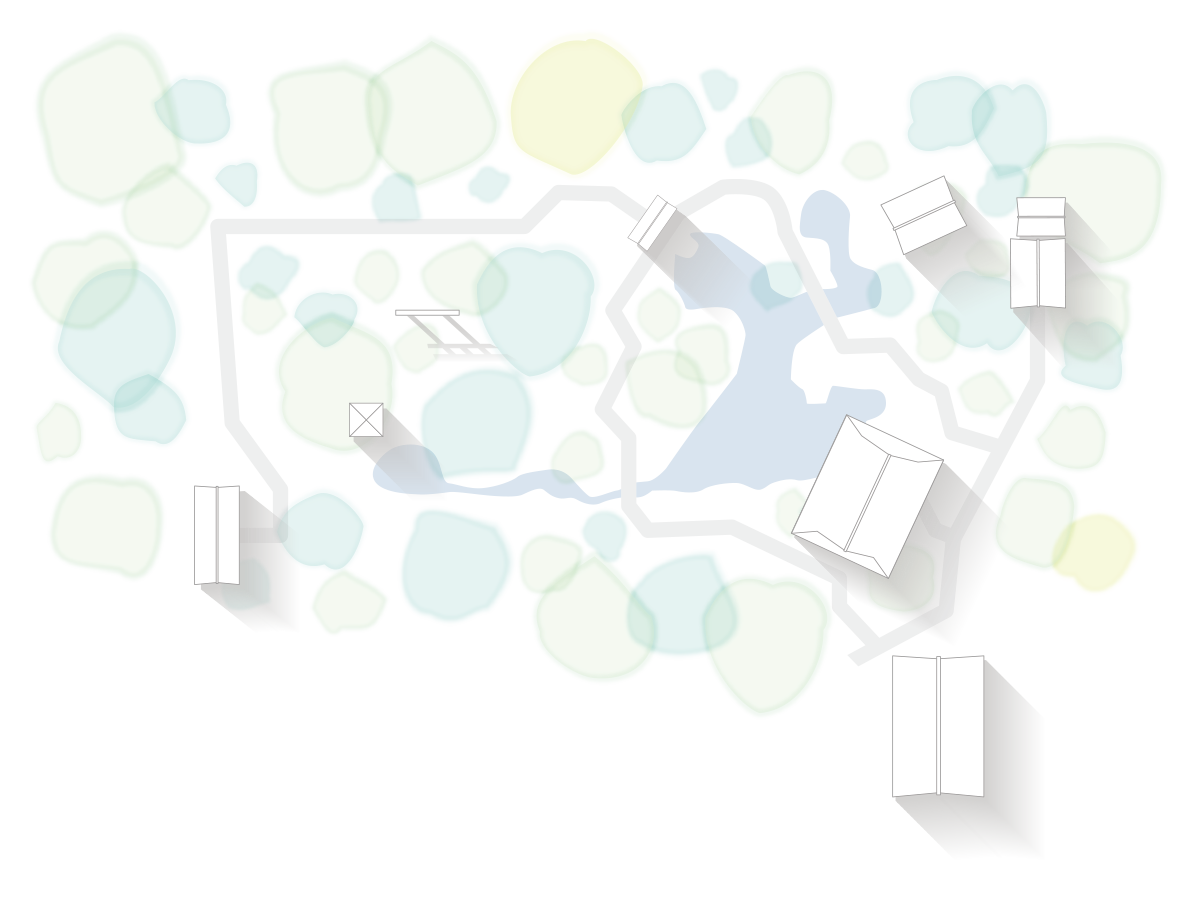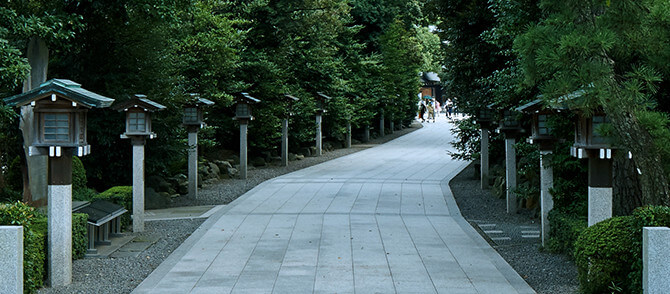The place called “Kantakeyama” located in the back of the main building of Samukawa-jinja Shrine was renovated as “Shinen (Garden)” which opened in August, 2009. The Shinen around “Nanba-no-koike” is said to be deeply related to the origin of Samukawa-jinja Shrine, and includes a Japanese garden with a pond in the center as well as a rest house and an archives center. After receiving religious services in the main building, please stop by Kantakeyama Shinsen for relaxation within the beauty of seasonal scenery.
Available from
Early March - December 13
*Closed every Monday (Will be open on national holidays)
Opening hours
9:00 - 16:00

1Sotomon


The traditional Japanese architecture of the entrance gate of Kantakeyama Shinen will invite visitors to the sacred world where Daimyojin is enshrined.
2Temizusha (building for cleaning hands and rinsing mouth)


Chozu-bachi (wash-basin) is made of stone from the foundation stone used for building the old third gateway. The rag stone inserted in the north-south direction indicates that the main building faces the west-south direction rather than due south.
3Nanba-no-koike


Located just behind the main building, from ancient times, Nanba-no-koike has been considered as a sacred spring deeply related to the origin of Samukawa-jinja Shrine. In Tsuina-sai held on January 2, after offering the spring water drawn into a bamboo container to the enshrined deity, it will be sprinkled on the earth of the precincts for expelling evil spirits.
4Ura-sanpai-jo (Worship area in the rear)


The place for worshiping Daimyojin from behind the shrine. Here worshippers reverentially fold their hands and gratefully express appreciation.
5Uchimon


Entering through Uchimon, one is led to the Chisen-Kaiyushiki garden (Japanese style garden with a path around a central pond and spring). Traditionally, the tea ceremony uses a classification scheme that includes “Shin”( formal), “Gyou” (flowing), “Sou” (free)to describe the quality of implements. Following this classification, Uchimon refers to the kekkai (boundary) at which the world of the sacred “shin” returns to the mundane world of “Sou.”
6Hakki no Izumi


The Chozu-bachi, it is made of stone taken from the foundation stone used for the old third gateway (torii), from where spring water flows forth. The scenery resembles yin-yang philosophy in its storing of primal energy for Happo-yoke.
7Tea-house “Chokushin-an”


This is an authentic tea house that includes a gate called “Baiken-mon” (“plum viewing gate”) and a waiting space called “Koshikake Machiai.” It is open one day a month.
8Massha Mioya-jinja Shrine


Mioya Shrine is a subsidiary shrine located behind the main building.
9Rest house "Waraku-tei"






Kantakeyama Shinen is the place where kami and people gather together to enjoy the changes of the seasons. Powdered green tea (matcha) and traditional Japanese sweets will be served as part of “Shin-jin-wa-raku” during which time is devoted to the kami.
Open Hours
From 9:30 to 15:30
Please enjoy aromatic matcha tea and seasonal sweets while looking out at the panoramic view of the garden.
Charge : From ¥500
10Ishibutai


A dance dedicated to the kami called “kagura” and Japanese court music called “gagaku” will be performed on the stage covered with Aji-ishi stones(one of three major types of granite in Japan) from Shikoku. The performance can be seen from the rest house “Waraku-tei.” Visitors can enjoy themselves within the natural beauty of the scene.
11Hotoku Shiryokan (archives center)




Documents concerning “Happo-yoke” of Samukawa-daimyojin are displayed so that visitors can learn the history of Samukawa-jinja Shrine and faith in Happo-yoke.
Samukawa-jinja Shrine is located in a forest with a wealth of nature through which the clear streams flowdown from the sacred Mt. Fuji.

 more
more
